The opening ceremony was not held in a stadium but on the river beside buildings representing the history of France
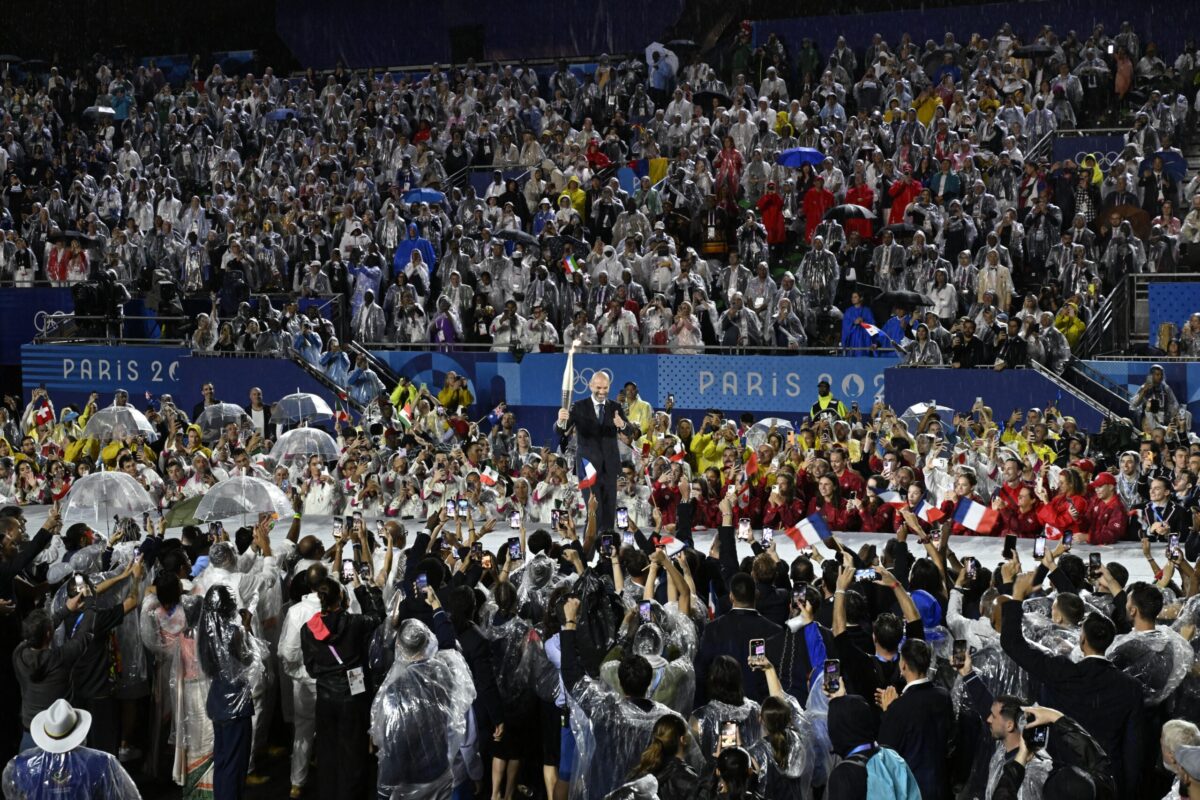
By: Robert Čoban
The opening ceremony of the 33rd Summer Olympics in Paris, the first to be held outside a stadium, will be remembered for its explosion of creativity, rain, and the misunderstanding of pop culture references by Maria Zakharova and Elon Musk, through Christian and right-wing circles around the world, to conspiracy theory-prone segments of the domestic public.
Everything will be alright. We’ll hang aristocrats on street lamps,’ sang the severed head of Queen Marie Antoinette the refrain of the famous French Revolutionary song ‘Ça ira,’ in Édith Piaf’s 1953 version. At that moment, it also started to rain.
I was at the Summer Olympics in Beijing in 2008, London in 2012, and Rio in 2016, and at the opening ceremonies in Wembley and Maracanã for the last two. What pop music and the queen are to the British, what Gisele Bündchen walking across the stadium to ‘Girl from Ipanema,’ played and sung by the grandson of the song’s famous author, is to the Brazilians—the severed head of Marie Antoinette, cabaret, parodies, disguises, and self-irony regarding their own history and predominant religion is to the French. All of which Maria Zakharova, Elon Musk, and part of our public did not understand.
The next morning, when I appeared on the morning program of one of our national television channels, I had to comment: ‘Well, when Maria Zakharova, Elon Musk, and our conspiracy theory enthusiasts organize the next Olympic Games, they should do it differently. The French did it this way!’
The program, designed by the team of French actor and theatre director Thomas Jolly, was a true explosion of creativity, some might say even—a provocation suitable for the French
I understand Maria Zakharova’s motives, but the others—it’s as if they haven’t watched a single film, musical, or any of the hundreds of reinterpretations of Da Vinci’s ‘The Last Supper,’ or seen any musical or film.”
Before it started to rain, we arrived in Paris with a six-hour delay because our plane, already ready for takeoff on the runway at Nikola Tesla Airport, was promptly offloaded after a crack was noticed on a window in the cockpit. We had to wait for a plane of identical capacity from Antalya to land, and instead of departing at 6:40, we flew to Paris at 13:00.
News of sabotage on the railways and announcements of strikes accompanied us throughout the entire journey. From the hotel next to the Parc Villette, where the national houses of some participating countries, including Serbia, are located, we immediately headed to the banks of the Seine. There, at entrance L2 in Zone D, we were greeted with seats from which we would watch the spectacular opening ceremony of the 33rd Summer Olympics. The first one was not held in a stadium but on the river beside buildings representing the history of France and a good part of the political and cultural history of the world.
The ‘Serbian boat,’ with 112 representatives from our country, was impressive, being the largest team from the entire region
The contrast with the previous opening ceremony could not have been greater: At the ‘Corona Games’ in Tokyo 2021, only 1,000 guests were allowed, including just 15 heads of state. This time, around 120 heads of state and government attended the ceremony. Representing the host country were, of course, President Emmanuel Macron with his wife Brigitte, Prime Minister Gabriel Attal, former President François Hollande, and Paris Mayor Anne Hidalgo. Also present were Thomas Bach, President of the International Olympic Committee, Gianni Infantino, President of FIFA, and Spiros Kapralos, President of the European Olympic Committee.
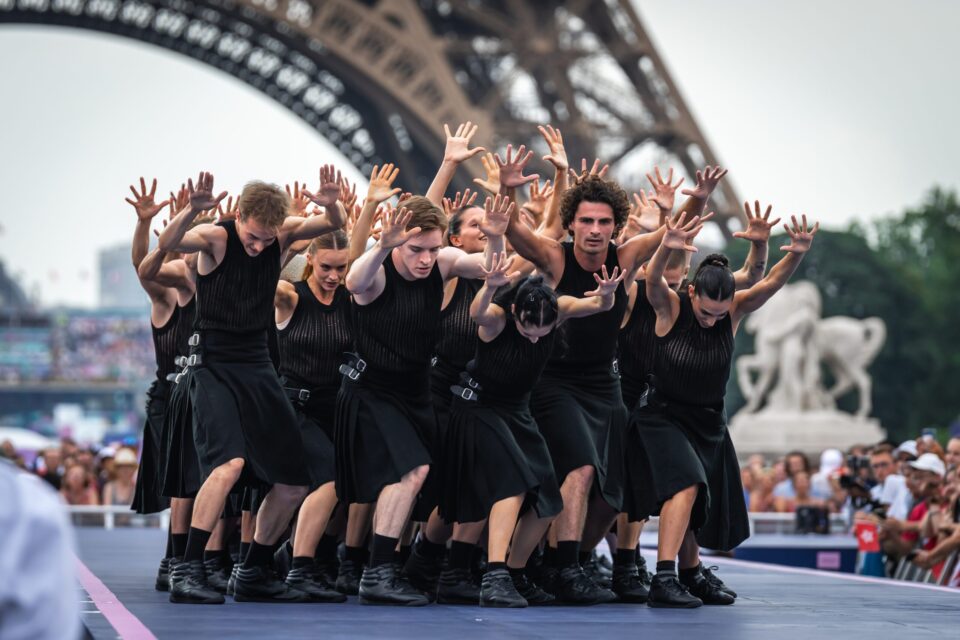
Among the foreign dignitaries in the stands in front of the Eiffel Tower were the prime ministers or presidents of Albania, Argentina, Armenia, Austria, Belgium, Bosnia and Herzegovina, Bulgaria, Cameroon, the Central African Republic, Colombia, Comoros, Croatia, Cyprus, the Czech Republic, Djibouti, Estonia, Ethiopia, Fiji, Finland, Gabon, Georgia, Germany, Greece, Guinea, Guinea-Bissau, Hungary, Iceland, Indonesia, Iraq, Ireland, Israel, Italy, Japan, Kosovo, Lebanon, Latvia, Libya, Liechtenstein, Malta, Mauritania, Mexico, Moldova, Mongolia, Montenegro, Morocco, the Netherlands, Paraguay, Romania, Rwanda, São Tomé and Príncipe, Senegal, Sierra Leone, Singapore, Slovakia, Slovenia, Switzerland, and the United Kingdom.
Serbia was represented by President Aleksandar Vučić, and the European Union was represented by Charles Michel, President of the European Council; Ursula von der Leyen, President of the European Commission; and Christine Lagarde, President of the European Central Bank. Also present were NATO Secretary General Jens Stoltenberg and UN Secretary General António Guterres.
From the royal families, the ceremony was attended by: the King of Belgium, the Prince of Bhutan, the King of Denmark, the Prince of Jordan, the Princess of Liechtenstein, the Prince of Monaco, the King of the Netherlands, the Emir of Qatar, the Prince of Saudi Arabia, and the King of Spain.
Other participating countries were represented by lower-ranking officials, such as vice presidents, deputy prime ministers, or relevant ministers. Among them was China, represented by Vice President Hen Zeng, while Jill Biden, the First Lady of the United States, attended on behalf of her husband, President Joe Biden, accompanied by Karen Bass, the Mayor of Los Angeles, the next host city for the Olympics.
As expected, the most criticism of the opening ceremony came from those who ‘weren’t invited to the party,’ namely from Russia
The program, designed by the team of French actor and theatre director Thomas Jolly, was a true explosion of creativity, some might say even—a provocation suitable for the French. ‘A true revolution in mental, artistic, and technical terms!’ as my colleague Radmila Stanković wrote to me.
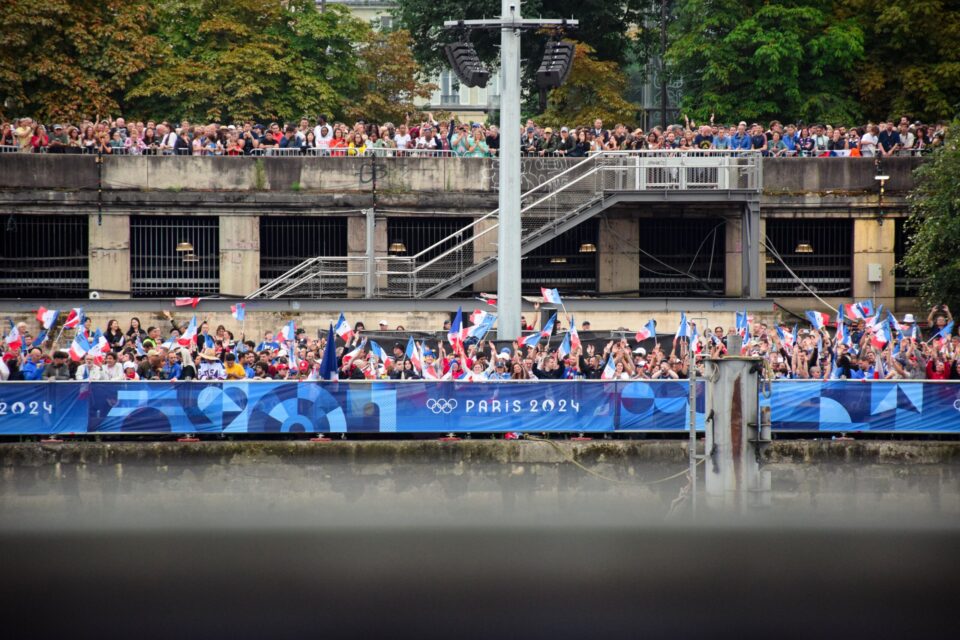
The program began with fireworks in French national colours on the Pont d’Austerlitz. From there, the parade of boats on the Seine began, which reached our viewing area in just a few minutes.
On 85 boats and barges, teams from a total of 206 national Olympic committees, as well as a refugee team from the International Olympic Committee (IOC), sailed down the Seine. I immediately noticed that the name of the country was incorrectly displayed for South Korea—North Korea (Democratic People’s Republic of Korea). What remains a mystery to this day is how the boat with Israeli athletes initially passed by empty—just the sign ‘Israel,’ empty seats, and in front of them, Iceland—only for a few minutes later, on the screen visible to both us at the location and viewers watching the live broadcast, a boat with Israeli athletes waving to the crowd appeared. Unofficially, this scene was filmed seven hours earlier to avoid security risks and potential audience booing.
The ‘Serbian boat,’ with 112 representatives from our country, was impressive, being the largest team from the entire region. Among them were not Nikola Jokić and Novak Đoković, which, as it was already raining heavily at the time, we could not immediately notice but read about later. This was also the largest delegation of Serbian athletes at any Olympic Games since the breakup of Yugoslavia.
The parade of boats was accompanied by numerous dance and musical performances. The first major show was by Lady Gaga, who performed the classic chanson ‘Mon truc en plumes’ in the shadow of Notre Dame Cathedral. This was followed by a showcase of French culture and way of life: from ‘can-can’ to the opera ‘Carmen,’ scenes from the musicals ‘Les Misérables’ and ‘The Phantom of the Opera,’ and heavy metal bands; from fashion show on the bridge to displays of famous artworks placed in the Seine near the shore, and performances of breakdancing, the only new sport at the Paris Games.
After the parade of boats concluded, the Olympic flag was carried across the Seine to Trocadéro on a metal horse ridden by a horsewoman. Then, the flag with the Olympic rings was mistakenly raised upside down, which some conspiracy theorists, both globally and locally, interpreted as clear evidence that ‘Satanists had a hand in it.’
Former French football star Zinedine Zidane started the final phase of the torch relay, which went from Trocadéro across the Seine to the Louvre. International and French sports stars passed the torch to each other. Among them were Spanish tennis ace Rafael Nadal, who was bidding farewell to his last Olympic Games in Paris; former tennis star Serena Williams; sprint legend Carl Lewis from the USA; former Romanian gymnastics world champion Nadia Comăneci; and former French NBA star Tony Parker. Finally, two French three-time Olympic champions ignited the Olympic flame in the Louvre courtyard: former runner Marie-José Pérec and former judoka Teddy Riner. The flame was lifted into the rainy Parisian night sky by a balloon. The emotional finale was provided by Canadian singer Celine Dion, who suffers from Stiff-Person Syndrome, a rare autoimmune disease. She had not performed live since 2020, but now, under the Eiffel Tower, she sang Édith Piaf’s classic chanson ‘Hymne à l’amour.
The biggest stir was caused by the ‘reinterpretation’ of Da Vinci’s painting ‘The Last Supper,’ leading the organizers to issue an apology the day after the opening for anyone who might have been offended by the scene. Artistic director of the ceremony, Thomas Jolly, stated that there was no intention to ‘mock or belittle anyone’ and added that the scene was designed to reference pagan gods. ‘It is clear that there was never any intention to show disrespect to any religious group,’ said Anne Deschamps, spokesperson for the Paris 2024 Organizing Committee, to reporters on Sunday, the day after the event. ‘On the contrary, I think Thomas Jolly was trying to represent and celebrate community tolerance. We believe he succeeded!’
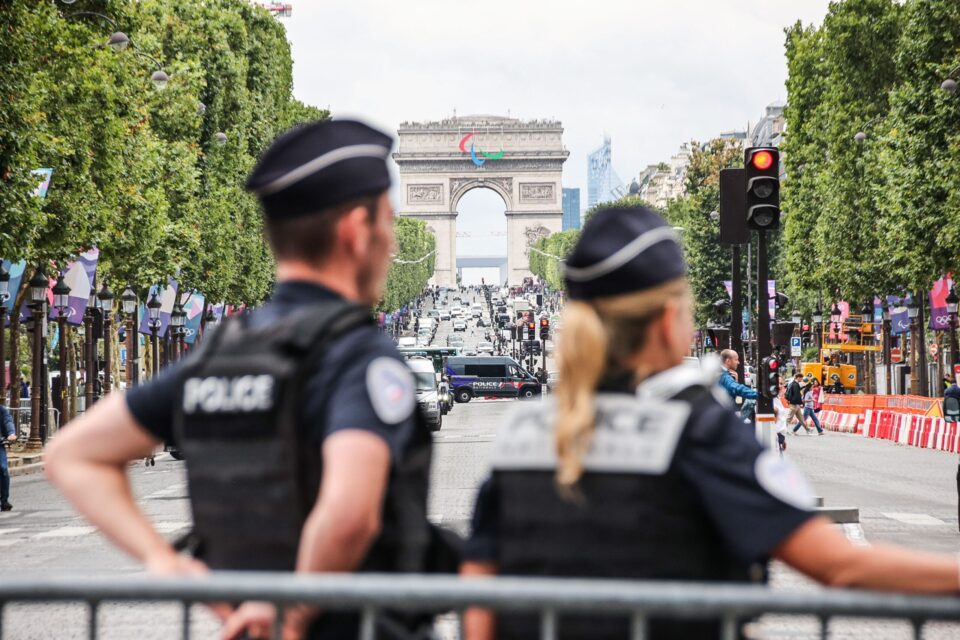
As expected, the most criticism of the opening ceremony came from those who ‘weren’t invited to the party,’ namely from Russia. Russian state officials and religious leaders harshly criticized the Paris 2024 Olympic opening ceremony, seizing on the rain and striking costumes to draw attention away from the games, in which Russia’s participation is strictly limited, and its national symbols are banned due to the invasion of Ukraine. This latest ban followed previous restrictions on Russian athletes and the exclusion of Russian national symbols and officials due to state-sponsored doping. Both the Russian Ministry of Foreign Affairs and the leadership of the Russian Orthodox Church made comments targeting the LGBT community following the lavish opening ceremony on Friday, where over 10,000 athletes from more than 200 countries and territories paraded along the Seine. ‘Cultural and historical suicide is happening in one of the former Christian capitals of European civilization,’ said Vahktang Kipshidze, spokesperson for the Russian Orthodox Church based in Moscow.
On Saturday, Foreign Ministry spokeswoman Maria Zakharova criticized the camp scene from the Paris ceremony, which some linked to Leonardo da Vinci’s ‘The Last Supper,’ calling it ‘a mockery of a sacred story for Christians’ and accusing the ceremony organizers of depicting Christ’s apostles ‘as transvestites.’ ‘Clearly, in Paris, they decided that if the Olympic rings are colourful, you can turn everything into one huge gay parade,’ Zakharova said. She described the event as ‘a ridiculous outdoor ceremony that forced guests to sit for hours in the rain’ and suggested that the organizers should have considered ‘cloud seeding’ to try to alter the weather.
Under the onslaught of the Russian disinformation campaign against the Paris Olympic Games, French authorities this week also announced the bizarre detention of a 40-year-old Russian chef, who is claimed to have been involved in a ‘large-scale’ plot to disrupt the Games.
Last year, after banning Russian athletes due to systematic doping, the International Olympic Committee (IOC) suspended Russia because it invaded Ukraine and Moscow’s claims of annexing four Ukrainian regions. Subsequently, the IOC announced that some Russian and Belarusian athletes could apply to participate under strict criteria. Ultimately, the IOC allowed 14 Russian and 11 Belarusian athletes to compete under neutral status in cycling, gymnastics, weightlifting, and wrestling. In 2016, the World Anti-Doping Agency (WADA) concluded that over 1,000 people were involved in a sophisticated and long-term doping scheme between 2011 and 2014, which was supported by the Russian state.
When it comes to our country, Serbian can be heard in every corner of Paris, not just in the Olympic Village and at the sports venues. As I wrote in the article seven days ago, these are the first Olympic Games in the past 20 years held in continental Europe for which Serbian citizens do not need a visa. The next Games in 2028 will be in LA, and in 2032 they will be in Brisbane, Australia, so for many, this is a unique opportunity to attend such an event. Serbia also presented itself at two special locations in Paris during the Games. The first is the Serbian Cultural Center, where, before the opening of the Olympics, Serbian Olympic Committee President Božidar Maljković, Sports Minister Zoran Gajić, and Olympic boxer Sara Ćirković opened the exhibition ‘The Path of True Values.’
Among the items on display are particularly notable the first athletics medal of Ivan Gubijan from the 1948 London Olympics, the silver wrestling medal of Branislav Martinović from Rome 1960, and a letter from Novak Đoković and Viktor Troicki from Rio 2016. Many exhibits, authentic photographs, sports equipment, and documents were presented.
The biggest stir was caused by the ‘reinterpretation’ of Da Vinci’s painting ‘The Last Supper,’ leading the organizers to issue an apology the day after the opening for anyone who might have been offended by the scene
The following day, ‘The Serbian House’ was also officially opened in La Villette Park. President Aleksandar Vučić attended the opening and cut the red ribbon. During the Games, La Villette Park will be named ‘Park of Nations’ as it hosts 15 national houses. The host of the Serbian House, Danijel Nikolić, presented the exhibit ‘Roots’ by Dušan Jovović, which showcased significant figures such as Nikola Tesla, Milutin Milanković, Mileva Marić Einstein, and many others. ‘The Serbian House’ was conceived as a unique centre offering visitors a rich and interactive experience of Serbian culture, history, sports, and gastronomy. There was a large crowd at the opening, so I immediately positioned myself at the epicentre of this final part – gastronomy. In the atmosphere of a traditional Serbian kafana with checkered tablecloths, I was immediately served rakija and later enjoyed traditional Serbian dishes prepared in a modern way by the most talented young chefs from Serbia’s Junior Chefs Club.
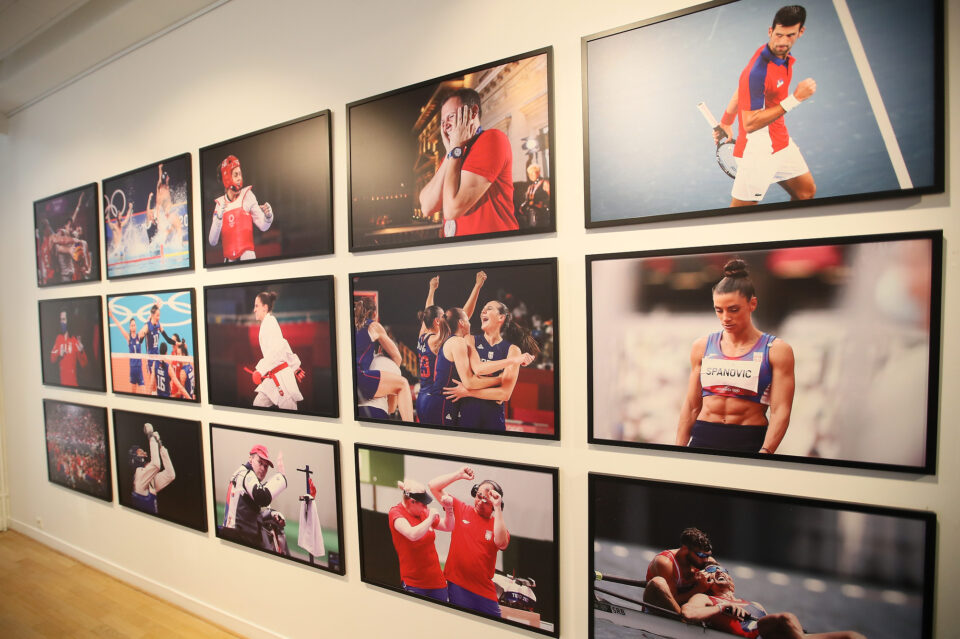
After two rainy days, a sunny Sunday dawned, and I, of course, used to explore Olympic Paris by bike. There were many smiling people all over the city and a visible presence of armed police, but everything felt quite relaxed. For those in the city during the Games, it’s even possible to book visits to the Louvre or Orsay museums a few days in advance. Public transportation and streets are not overly crowded as something similar happened in London in 2012 – namely, a large percentage of Paris residents left the city before the Games began.
At the moment I am sending this text, news arrives of the first gold medal for Serbia at these Olympic Games. Serbian shooters Zorana Arunović and Damir Mikec won in the 10-meter air pistol event, defeating the Turkish pair Seval Ilayda Tarhan/Yusuf Dikec with a score of 16:14. Tonight we will celebrate their gold at the Serbian House.